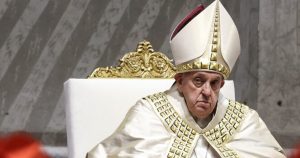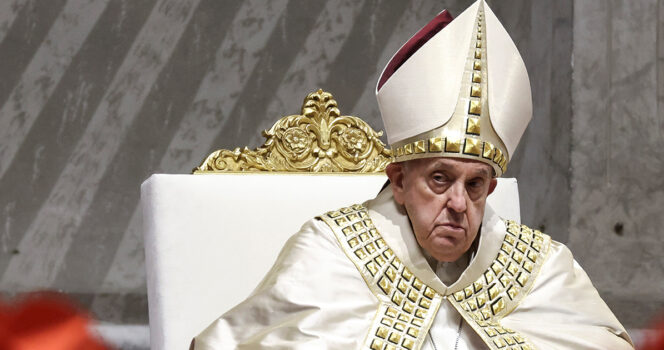Pope Francis passed away at the age of 88, and the Vatican has confirmed that, in keeping with long-standing custom, the gold Fisherman’s Ring, one of the most emblematic objects of his pontificate, will be destroyed.
On Easter Monday, April 21, at 7:35 AM local time, the Pope, Jorge Mario Bergoglio, who was born in Buenos Aires, died quietly in his humble home in Vatican City. Since his election in 2013, he had stayed in the Vatican guesthouse, remaining faithful to the humility that characterized his life and leadership, rather than living in the lavish Apostolic Palace.
A brain stroke that resulted in a coma and ultimately irreparable heart failure was listed as the cause of death. Focus has shifted to the Fisherman’s Ring and other enduring symbols of his legacy as funeral arrangements and international tributes get underway.

The ultimate value of the ring, which is estimated to be around $520,000, is not in gold but rather in its significance. The signet ring, which is worn on the pope’s right hand, has long represented the pope’s spiritual power and relationship to Saint Peter, the first Roman bishop and a professional fisherman. In the past, official papal letters and documents were sealed with the ring. Although it serves mostly ceremonial purposes now, its significance has not changed.
It is customary to ceremoniously destroy the ring after a pope passes away. The Camerlengo, the cardinal designated to rule the Vatican in between popes, performs this holy duty. Cardinal Kevin Farrell currently serves in that capacity and is in charge of this ancient ceremony.
In front of the College of Cardinals, the ring and its accompanying bulla—the formal papal seal—will be destroyed. In addition to marking the end of a papacy, this ceremony ensures that the ring will never be abused or copied following the pope’s death. In the past, a silver hammer was used to deface the ring; today, the destruction is more symbolic and frequently involves engraving a deep cross on the ring.
This usually happens just before the papal conclave, the solemn procedure where cardinals convene to choose the new pope, starts. Within 15 to 20 days of the pope’s passing, the conclave is anticipated to start.

Cardinal Farrell revealed Pope Francis’s death in a heartfelt message, stating:
I regret to inform you of the passing of our Holy Father Francis, dear brothers and sisters. Francis, the Bishop of Rome, returned to the Father’s house this morning at 7:35.
He devoted his entire life to serving the Lord and his Church. He taught us to live out the gospel’s principles with courage, fidelity, and compassion for everyone, especially the weakest and most disenfranchised.
“We praise Pope Francis’s soul to the boundless, merciful love of God, One and Triune, with great appreciation for his example as a true disciple of the Lord Jesus.”
The destruction of his ring will signal a mournful, symbolic end to his exceptional service — and the start of a new chapter in the history of the Catholic Church — as the world grieves the loss of a pope who is largely recognized as a champion of humility, compassion, and change.
